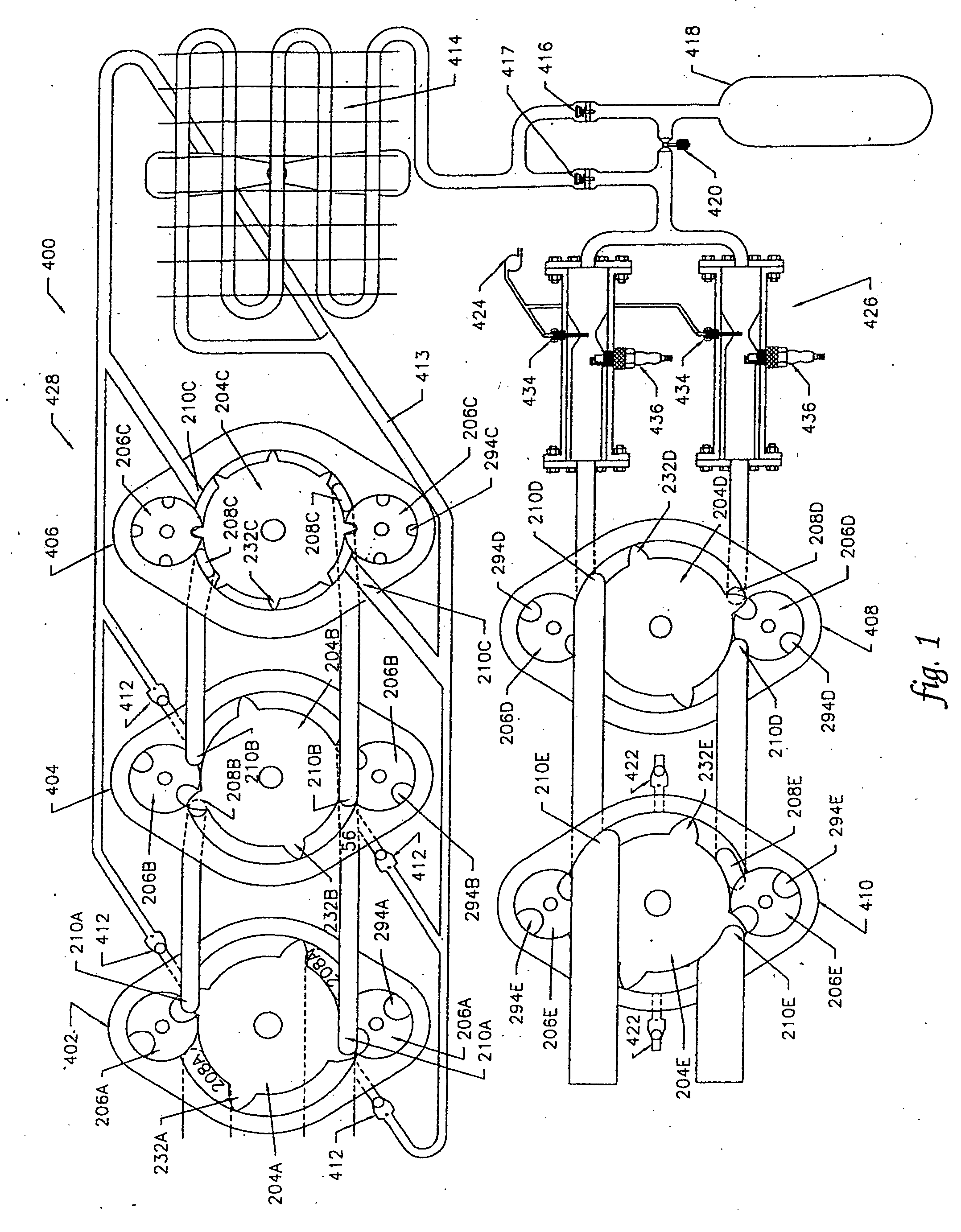External combustion rotary piston engine
a rotary piston, external combustion technology, applied in the direction of engine components, sealing arrangements, combustion engines, etc., can solve the problems of pistons and connecting rods, maintenance problems, temperature and pressure of gas still far above the surrounding atmosphere, etc., to achieve low nox emissions, simple manufacturing, and efficient and reliable operation
- Summary
- Abstract
- Description
- Claims
- Application Information
AI Technical Summary
Benefits of technology
Problems solved by technology
Method used
Image
Examples
first preferred embodiment
[0132] Turning now to the engine 400 constructed according to the aforementioned first preferred embodiment, a schematic overview of same is shown as FIG. 1.
[0133] From the overview, this engine 400 will be seen to comprise a first compression stage 402, a second compression stage 404, a third compression stage 406, a positive displacement air motor 408 and a positive displacement gas expander 410. Each of these elements take the form of a rotary device as previously described, and in fact, the exemplary rotary device described is one and the same as that of the second compression stage 404. As these rotary devices are generally similar in operation and structure, a detailed description of each is not provided herein. Rather, it should simply be understood that equivalent structures in each of the rotary devices share a common numeric identifier, and that the alphabetic identifier of the structures denote the device in question, as follows: first compression stage (A), second compr...
second preferred embodiment
[0161] A second preferred embodiment of an engine according to the present invention is illustrated in FIGS. 21-26. Components of this engine which correspond to those of the first preferred embodiment are provided with identical reference numerals. As will be evident to persons of ordinary skill in the art, this engine is generally similar to that of the first preferred embodiment, and thus, a detailed description of its components and operation is neither needed nor provided herein. Rather, for simplicity, only the differences in structure and operation are herein set out.
[0162] From the standpoint of structure, this engine lacks a third compression stage, and includes only two pistons, in contrast to the previous embodiment, wherein five pistons were used. Further, wherein in the previous embodiment the gate rotors were disposed 180° apart from one another relative to the drive shaft, herein, the gate rotors are about 130° apart from one another, such that the chambers defined o...
PUM
 Login to View More
Login to View More Abstract
Description
Claims
Application Information
 Login to View More
Login to View More - Generate Ideas
- Intellectual Property
- Life Sciences
- Materials
- Tech Scout
- Unparalleled Data Quality
- Higher Quality Content
- 60% Fewer Hallucinations
Browse by: Latest US Patents, China's latest patents, Technical Efficacy Thesaurus, Application Domain, Technology Topic, Popular Technical Reports.
© 2025 PatSnap. All rights reserved.Legal|Privacy policy|Modern Slavery Act Transparency Statement|Sitemap|About US| Contact US: help@patsnap.com



